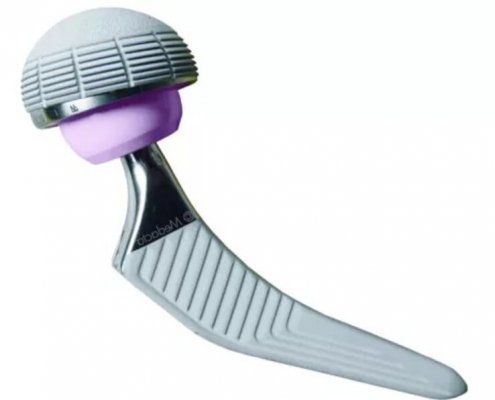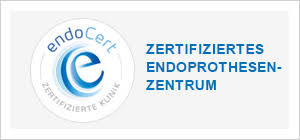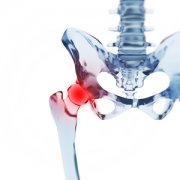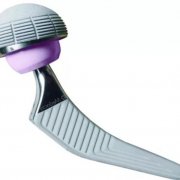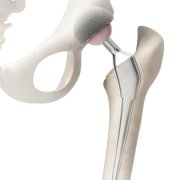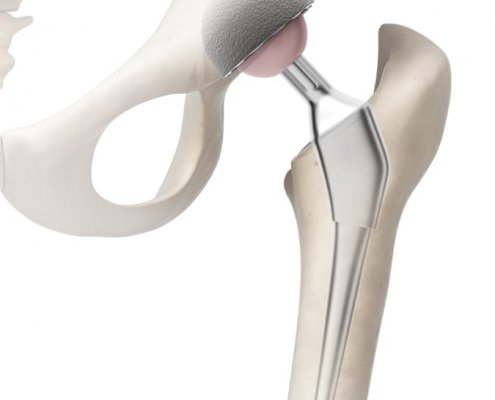Coxarthrosis & hip prosthesis
Joint replacement for hip arthritis
As a senior surgeon for knee and hip prostheses in an EndoCert-certified special department for maximum care, I can offer you externally controlled high-quality services in these special areas.
What is coxarthrosis?
Coxarthrosis (hip joint arthrosis) is a disease in which the hip joint or the cartilaginous joint surfaces of the hip joint increasingly wear out. Risk factors are congenital deformities, a CAM deformity, previous injuries and operations, inflammatory diseases and metabolic diseases.
What kind of complaints do you have?
The main symptoms of coxarthrosis are pain in the affected hip joint, a feeling of stiffness and restricted mobility. At first, the complaints only occur during exercise. However, as the disease progresses, the pain can also be felt at rest.
Is an operation always necessary?
The option of non-surgical osteoarthritis therapy should always be considered first.
Muscle building and weight loss with increased exercise and a change in diet should be a cornerstone. Physiotherapy (remedial gymnastics) is a useful addition.
Therapy with anti-inflammatory injections, cartilage cures with hyaluronic acid and autologous blood therapy (PRP) can help to relieve pain in the knee joint up to moderate osteoarthritis and slow the progression of the disease. The exact course of therapy is based on the causes and severity of the coxarthrosis and other factors such as the patient’s age and activity level.
More to arthrosis therapy
When does joint-preserving surgery make sense?
As part of a CAM deformity, bony cusps are formed at the transition from the femoral head to the femoral neck. This can result in pain from an injury to the joint lip (labrum) and increasing cartilage wear. Joint-preserving surgery is possible if the coxarthrosis is not too advanced.
When does an artificial joint replacement / hip prosthesis make sense?
If the pain does not improve and the osteoarthritis progresses, an artificial hip joint should be used. The timing of the operation is based on the severity of the complaints. The main criteria are a significant reduction in quality of life and mobility, increasing restrictions on the movement of the hip joint, pain at night and regular use of painkillers.
What is a hip prosthesis?
A hip prosthesis is an artificial replacement for the worn out cartilaginous hip joint surface. Only the worn parts are replaced. Surrounding structures such as tendons and muscles are completely preserved.
A hip prosthesis consists of 4 parts. A titanium socket is anchored in the pelvic bone. An insert made of ceramic or a highly cross-linked polyethylene is fitted into the socket as a sliding pair. A titanium shaft is inserted into the thigh bone and finally a ceramic head is attached to the titanium shaft.
The socket and the shaft are inserted precisely into the bone bed. The surface properties of the prosthesis lead to ingrowth into the bone. The sliding pair (head and insert) are made of modern, very durable materials. As a result, there is only minimal, irrelevant wear. As a result, the size of the head could be increased significantly, which massively reduced the complication of a hip dislocation.
Only hip prostheses from well-known companies with excellent long-term results are used at the Speising Orthopedic Hospital.
Which surgical operation makes sense? What is AMIS?
In order to largely protect the tissue, I use the minimally invasive AMIS method. The joint is accessed from the front. While other operations tend to sever the muscles, this technique pushes the muscle to one side, which has several advantages for the patient:
- minimized blood loss
- decreased pain after surgery
- shorter healing time
- faster resilience of the hip joint after the operation
- quicker active and mobile again.
Quickly mobile again with the Rapid Recovery Program
In order to be able to put weight on the hip joint as soon as possible after the operation, mobilization is carried out in the Orthopedic Hospital in Speising according to the Rapid Recovery Program. This program optimizes all processes before, during and after the operation. You will be prepared for the procedure in a patient training course.
You will find extensive information on the Rapid Recovery Program at the Orthopedic Hospital Speising in the brochure Wegbegleiter Hüftprothese (in German).
More to Rapid Recovery
If you have any questions about the treatment of hip osteoarthritis, I will be happy to assist you personally.
Hip replacement
Dr. Pramhas in February 2017, implanted a second hip joint within six months. Everything again went smoothly and I was very satisfied with his support, both professionally and personally. He even came by on Sunday off duty. I have been free of pain for a long time now. Fully recommended!
to recommend
My hip surgery was a complete success.
The examinations after the operation were also trustworthy.
Visit to the doctor after hip surgery
Dr. Pramhas is an excellent surgeon and I also feel that I am in very safe hands, so I can and will recommend him fully!
What complaints do you have?
After a detailed diagnosis, I will work with you to create the therapy plan.
Make an appointment in my ordination right away:
T: 01 587 21 31 or online
